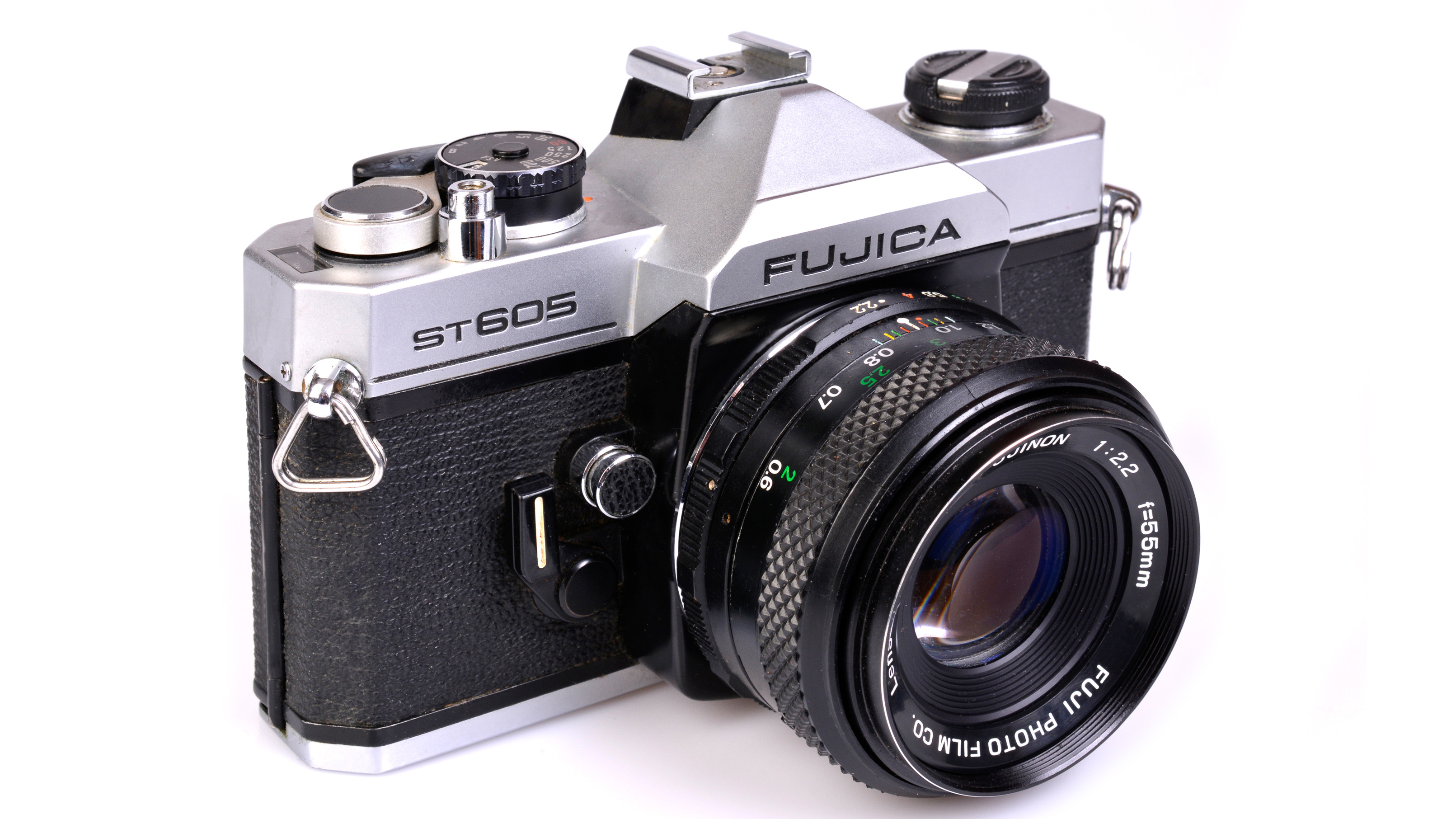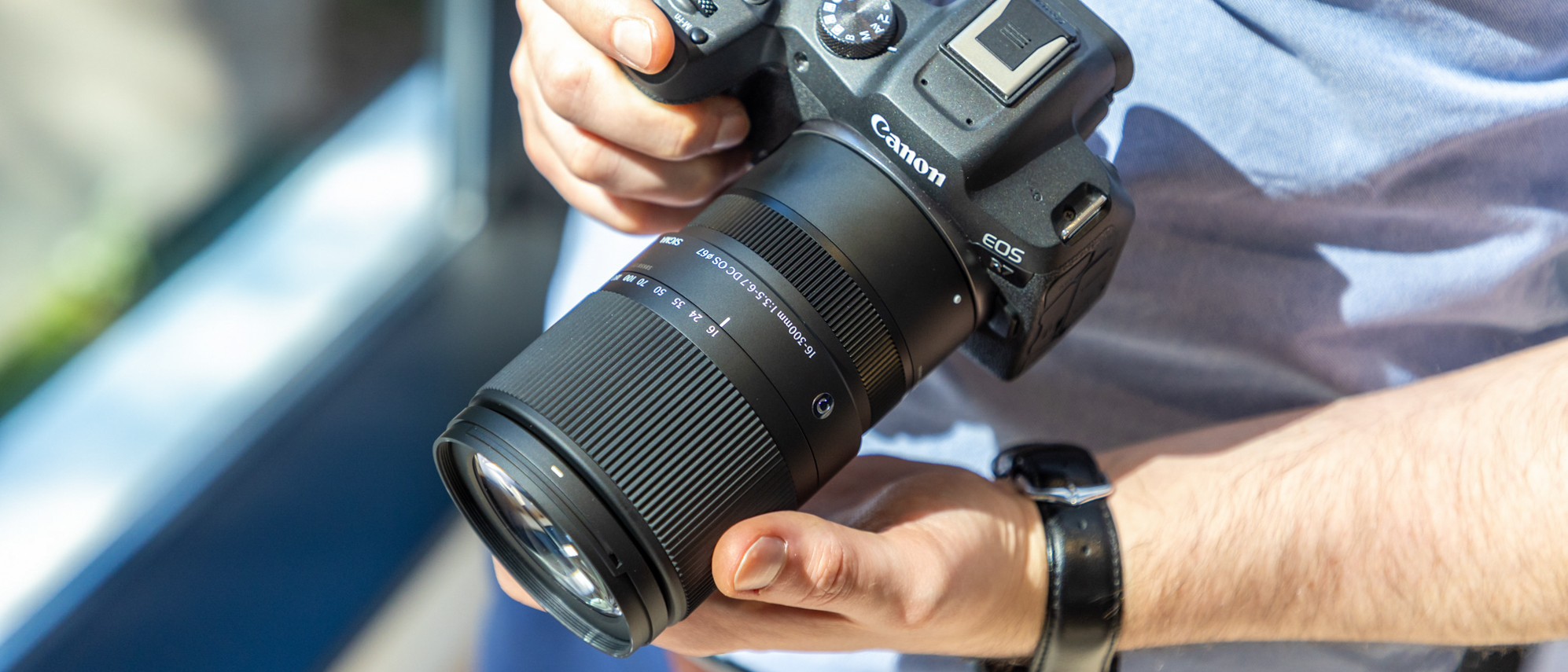Early Verdict
The ST series Fujicas still don’t have much cachet as collectibles compared to the rival mechanical contemporaries from the likes of Nikon, Olympus, and Minolta. However, the back-to-basics Fujica ST605 is now being ‘discovered’ as an interesting alternative to more popular cameras such as the Pentax K1000 and the Minolta SR-T models. Being less common is becoming an attraction. The screw mount means it can be fitted with a whole host of period lenses, but it’s worth tracking down the Fujinon EBC models, because they remain superb performers optically.
Pros
- +
Basic 35mm film SLR
- +
Plentiful lenses (via M42 mount)
Cons
- -
Aperture needs to be stopped down manually
- -
No center-weighted or spot metering
- -
1/700sec top shutter speed
Why you can trust Digital Camera World
If all your photography practice has been in the digital era, you may not know that Fujifilm had a very productive ‘previous life’ as the maker of film cameras. Of course, the company started out making film – for both photography and cinematography – but in 1948, it introduced its first camera, a 6x6cm ‘folder’ called the Fujica Six. The Fujica brand was derived from Fuji Camera and remained in use until the mid-1980s.
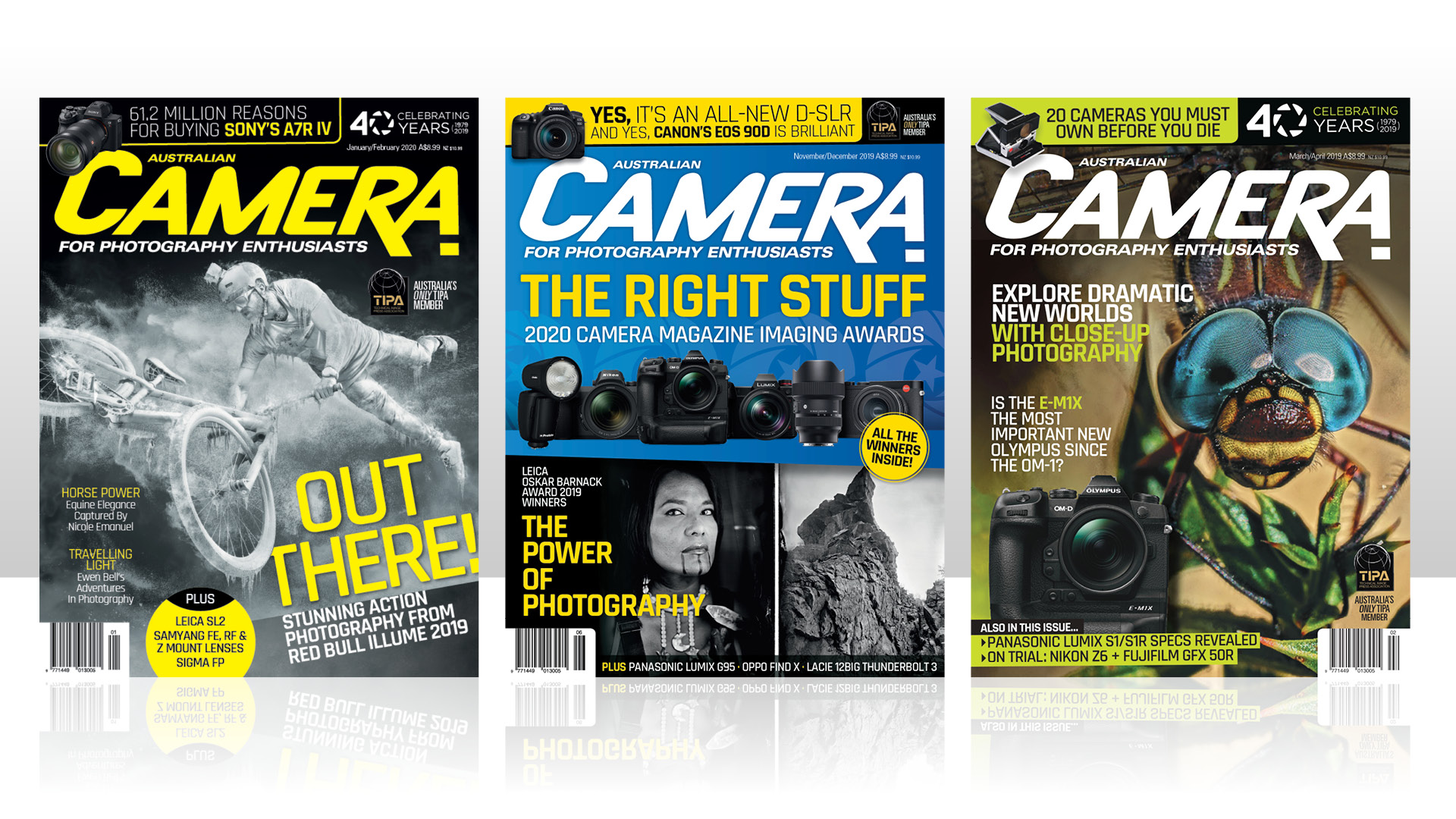
This review originally appeared in Australian Camera magazine, one of Digital Camera World's sister titles Down Under. Click here to find out more about Australian Camera magazine, including how you can subscribe to the print issues or buy digital editions.
The company introduced its first 35mm camera in 1957, a rangefinder design called the Fujica 35M. Subsequently, there was a steady stream of development introduced in successive models, culminating in 1962 with the Fujica 35mm Auto-M, which was the world’s first 35mm camera with programmed exposure control. During the 1970s and ’80s, Fuji was very much part of the mainstream in terms of its amateur cameras (well, it actually helped create the mainstream), adopting all the developments in 35mm camera design – built-in flash, motorized film transport, autofocus, auto film speed setting, etc – and introducing a few of its own such as drop-in loading with automatic film threading. It also followed all the format twists and turns – 110, Disc, APS, and instant print (still going with today’s Instax system) – and it was at the forefront of the charge into digital imaging. Shown at the 1988 Photokina, the Fujix DS-1P was world’s first truly digital camera, and while it only went into very limited production (and was never sold outside Japan), it set the scene for what was to come.
In the professional arena, Fujifilm also chose to think outside the square – literally – and resolutely avoided the popular 6x6cm format and also the SLR and TLR camera configuration, instead building a stream of rangefinder cameras in the 6x4.5cm, 6x7cm and 6x9cm formats. When it did eventually introduce a medium format SLR, it was in the unusual 6x8cm format, and there were also 6x17cm panorama cameras.
Fujica ST605: Specifications
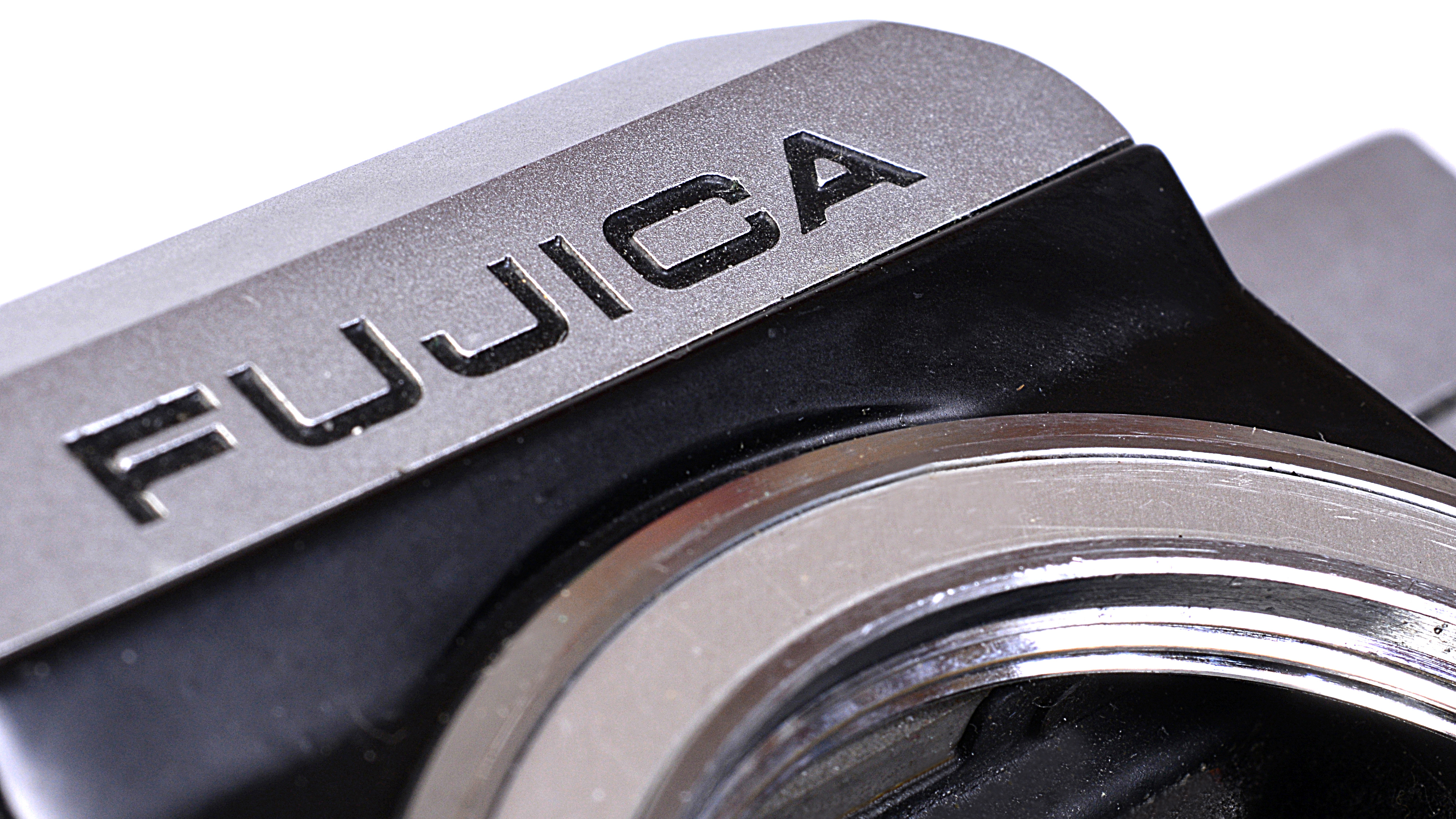
Lens mount: M42 screwthread
Focusing: Manual via split-image rangefinder and microprism collar.
Exposure control: TTL fully-averaging measurement using one silicon ‘blue’ photodiode (SPD) coupled with FET (Field Effect Transistor). Stop-down metering. Metering range = EV 3.3-17.6 (ISO 100, f/1.4).
Shutter speed: Mechanically-controlled focal plane, horizontal travel, cloth curtains. 1/2-1/700 second plus ‘B’. Flash sync up to 1/60 second.
Battery: Two 1.5 volt button-type batteries (SR/LR44 type).
Dimensions: 133x86x50mm (body only).
Weight: 570g (body only without batteries)
History of Fujica SLRs
The company’s first 35mm SLR, the Fujica ST701, was launched in 1970; Fujifilm was fairly late on the scene here, but was still in time to make the most of what was becoming a booming category. The ST701 used the M42 screwthread lens mount, which had been introduced by Zeiss Ikon and was subsequently adopted by a variety of other brands, including Praktica, Pentax, Mamiya, and Yashica. All would eventually switch to a bayonet fitting – Fujifilm in 1980 with its original X mount.
During the 1970s, however, the ST-series cameras proved popular and Fujifilm even had a couple of its own design ‘firsts’ in 35mm SLRs. The most important of these was the adoption of silicon photodiodes (SPDs) for the ST701’s TTL metering system, which were more sensitive than the CdS (cadmium sulphide) cells that were widely used previously. Subsequently, everybody switched to SPD-based metering. As an interesting aside, with the 701’s replacement (the ST705 launched in early 1977), Fujifilm also found a way to allow for full-aperture metering, an unusual convenience on a screw-mount reflex camera.
In 1972, the Fujica ST801 pioneered the use of an LED viewfinder display; this idea was further developed with the ST901 (1974) that displayed an LED shutter speed read-out in the viewfinder.
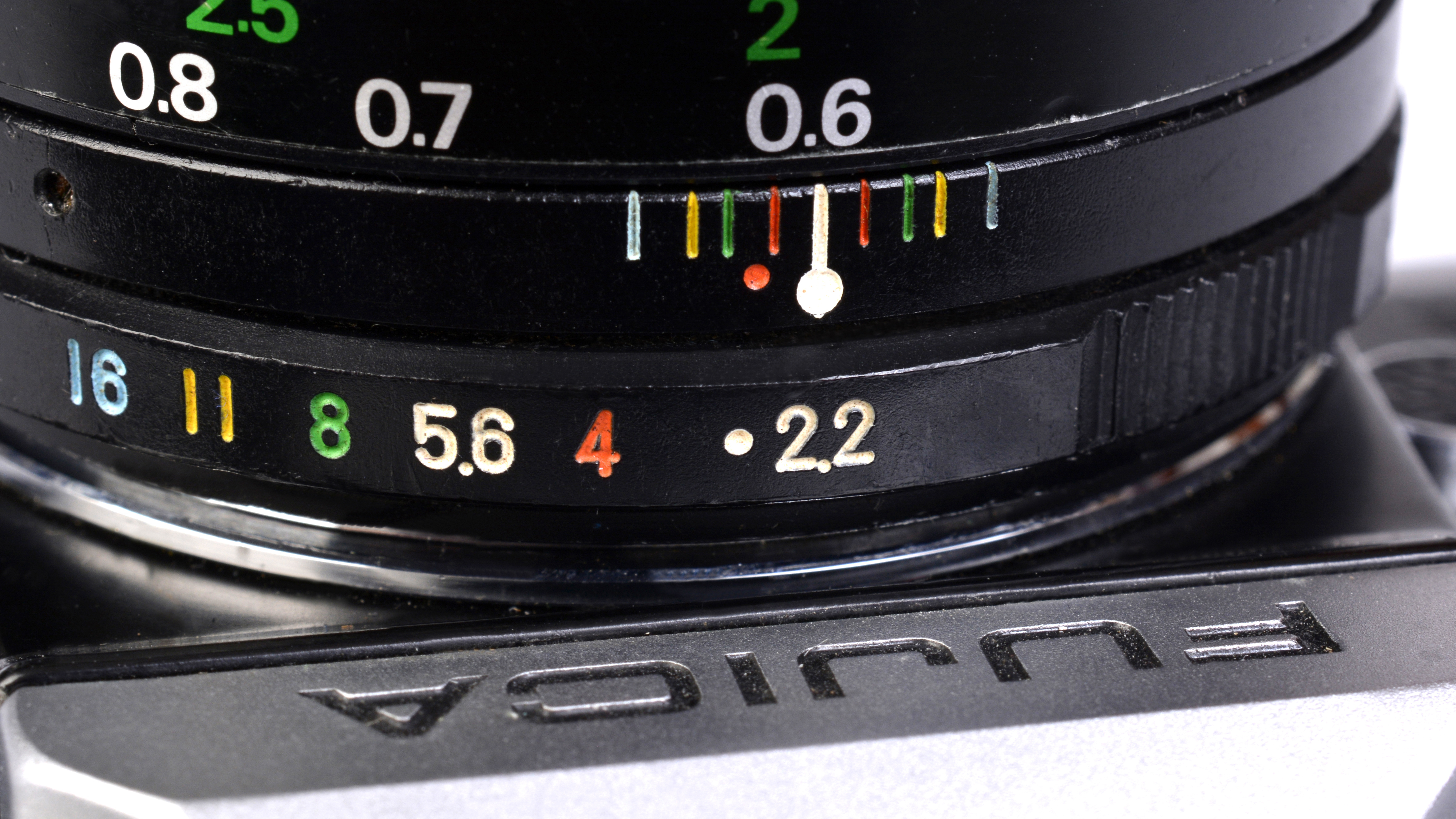
The first entry-level Fujica 35mm SLR, the ST601, was introduced in 1975, but didn’t last long before it was replaced in March 1976 by the ST605… the main change being to the metering circuitry so it could use 1.5 volts batteries rather than the soon-to-be outlawed 1.35 volts mercury cells (good news for todays’ users, as the newer button cells are still readily available).
While the ST605 inherited the more accurate and more responsive SPD metering from the ST701, it was distinctly no-frills everywhere else. Then as now though, a big attraction was the Fujinon lens system, which – by the time the ST605 arrived – was already extensive and spanned everything from a 16mm fish-eye up to a 1,000mm supertelephoto. Importantly, these lenses benefitted from everything Fujifilm knew about making high-grade optics for broadcast TV, cinematography, large format cameras, and medium format.
In the 1970s most 35mm SLR line-ups included a fully mechanical – and hence fully manual – entry-level model (later these cameras tended to be fully automatic except for focus). The ST605’s competition included the Pentax K1000 and MX, the Nikkormat FT2, Canon’s AT-1, and the Cosina CS-1. As well as being affordable, these cameras were considered important by their makers as they often established brand loyalty among users, which resulted in many subsequent upgrades and the purchase of additional lenses.
Fujica ST605: Handling
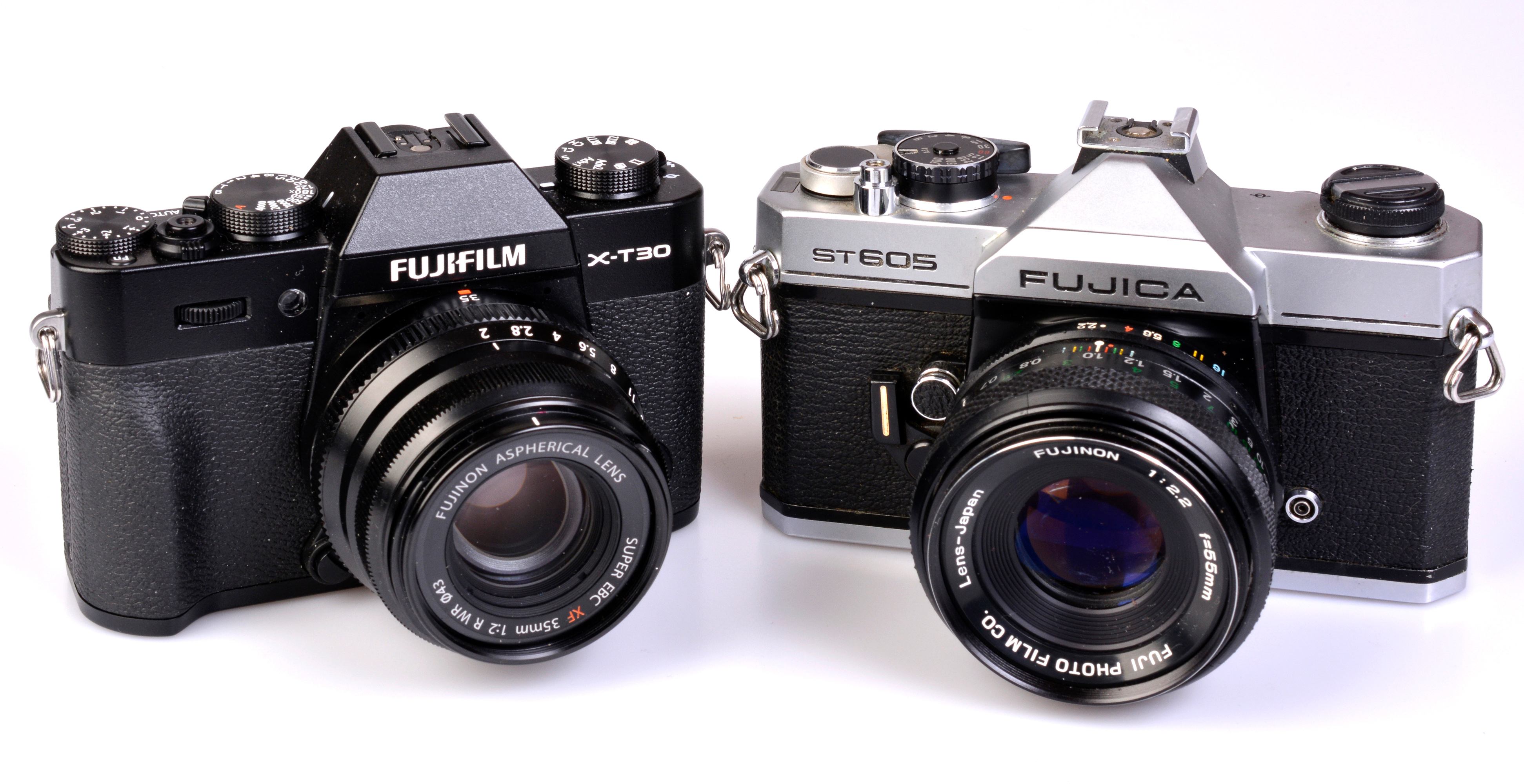
The ST605 was very much a product of its time, with a metal body that was reasonably compact, but not quite as small as the Olympus OM-1 and OM-2 or Pentax’s M series (which was launched in 1977). The brochure described it as “outstanding for its compactness and lightweight”. At 570g for the body only or 705g with the Fujinon 55mm f/2.2 standard lens, the ST605 would now be considered more of a heavyweight, with the likes of the Fujifilm X-T30 II weighing 329g and the X-T200 tipping the scales at 321g (both body-only weights).
The styling is clean and crisp, with a simple elegance that was common for the day, although the entry-level Fujica SLR camera was better proportioned than many, making for a more cohesive appearance. It isn’t quite as pretty as the OM-1/OM-2, but not far off it. There are elements of the ST-series styling clearly evident in Fujifilm’s current retro-look X-mount mirrorless cameras, particularly in the shapes of the EVF housings. There aren’t too many shared design features though – essentially only the traditional shutter speed dial and the screwthead socket in the shutter button for fitting a cable-release.
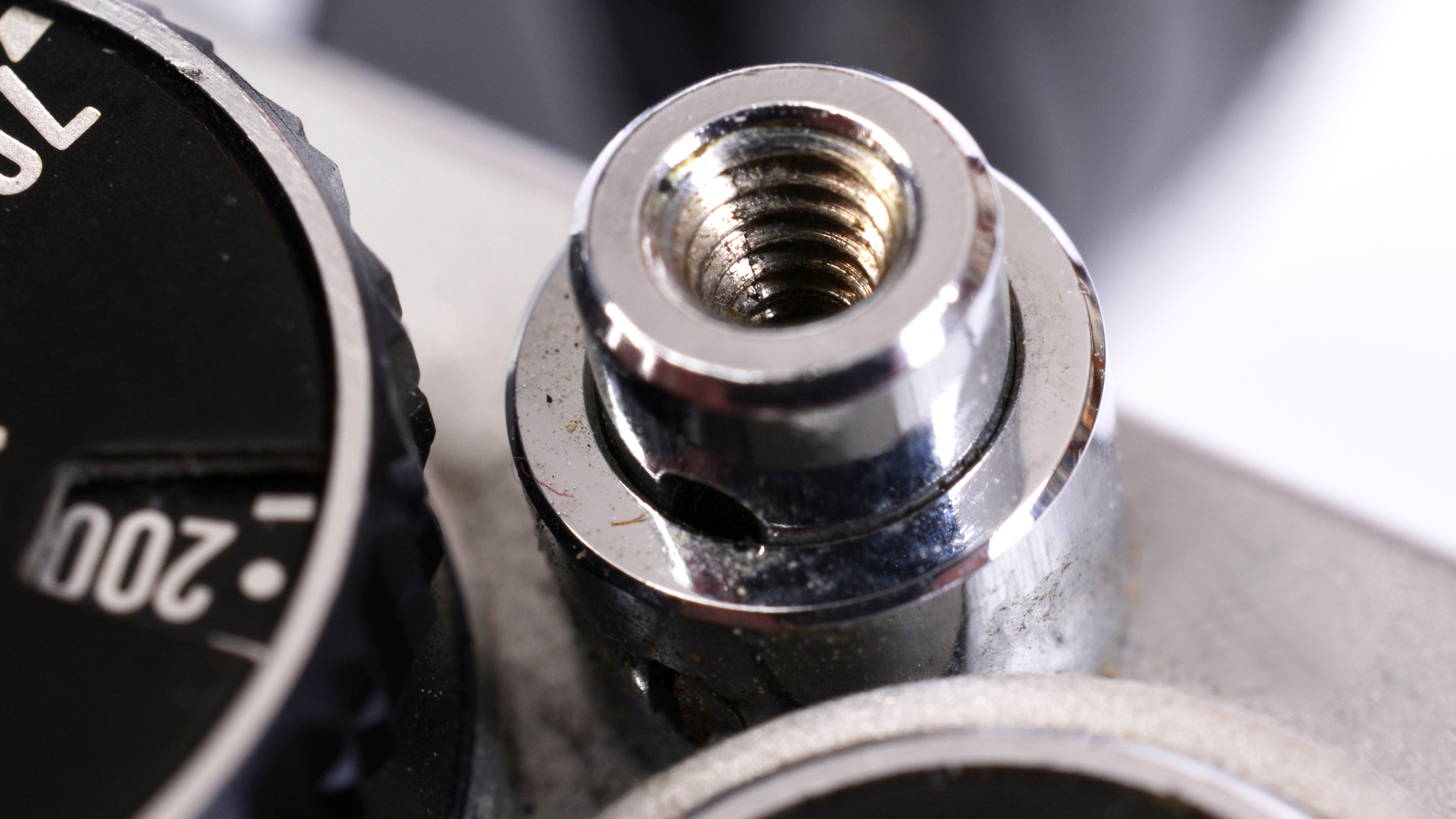
Even by the standards of the mid-1970s, the ST605 was pretty spartan. The metering is fully averaging without the luxury of any centre-weighting or, indeed, full aperture measurement (probably a good reason at the time to save up a few more pennies and buy the ST705). Stop-down metering was a dictate of the screwthread lens mount – the main reason it was eventually universally abandoned for bayonet-type fittings – and meant that the lens always closed down to the set aperture when taking an exposure reading. Consequently, of course, the viewfinder progressively darkens with the smaller apertures and becomes harder to see through, especially at f/16 and f/22. It’s not impossible though – the ST605’s finder is quite bright to start with and the 55mm f/2.2 only stops down to f/16, at which point you can still clearly see what’s going on. Of course, by stopping down the lens, you get depth-of-field preview thrown in for good measure.
There’s a simple needle-type exposure indicator (a shutter speed read-out was added with the ST605N) that actually provides more information than you might think. The basic objective is to centre the needle in the display – which you can do by adjusting either apertures or shutter speeds, or both – but it sits within two sets of cut-outs that represent two stops of either under- or overexposure. Using these, you can deliberately adjust the exposure to suit the situation – something that is often required with fully averaging metering – or to create either high-key or low-key pictures. It’s worth noting here that the current Fujifilm X-mount cameras offer fully averaging metering mode alongside center-weighted average, multi-zone and spot.
The ST605’s shutter has a speed range of 1/2-1/700 of a second – nobody has ever quite been able to explain this curious fastest setting when all the direct rivals ran to 1/1000 second (and the ST705 up to 1/1500 second). Flash sync is up to 1/60 of a second and there’s both a hotshoe and a PC terminal, the latter a standard feature even on low-end cameras for a long time. Using a new oilless mechanism – silicon was employed for lubrication instead – Fujifilm claimed its shutter was subsequently much more reliable in extremes of temperature. With physical focal plane (mechanical) shutters perhaps destined to become a thing of the past, the Fujica’s is already a piece of history as it uses cloth curtains – actually silk with a thin coating of rubber on either side – with a horizontal travel. Vertical-travel shutters using metal blades would soon become the norm in the 35mm SLRs.

The film speed range (then in ASA, which became ISO) spans ISO 25 to 3,200, which covered all the films that were readily available then from Kodachrome 25 or Kodak Technical Pan for B&Ws (also rated at ISO 25) up to the fastest stocks that were then either ISO 800 or 1,000. Film loading, advancing and rewinding are all done manually, as is focusing – done via the ground-glass focusing screen – with a split-image rangefinder surrounded by a microprism collar. Both these devices are now replicated digitally in Fujifilm’s current X-mount cameras to serve as assists for manual focusing.
Apart from offering affordability, fully manual entry-level 35mm SLRs like the Fujica ST605 were also designed to teach you the basics of exposure control and focus before you progressed to something more advanced.

There was plenty of trial-and-error involved, but this was how you came to understand about using under- or overexposure either as a corrective measure (to overcome the limitations of the metering in many situations) or as a creative tool. You also learned about depth of field and its relationship to the aperture, lens focal length and subject distance… and, consequently, at some point, you inevitably discovered the secret of the hyperfocal distance. I know this because a Fujica ST605 was the second 35mm SLR I owned after struggling with a clunky Praktica L2 for a year or two. In comparison, the ST605 was significantly more compact and lighter, much better built, with a better viewfinder and built-in TTL metering. Plus, of course, it was affordable and the screwthread mount meant that I could keep the 135mm lens I already had for the L2. And, yes, subsequently I’ve owned quite a number of Fujifilm cameras, including two rollfilm rangefinder models (6x4.5cm and 6x7cm) and, currently, an X-Pro3.
The ST605 featured here is a recent addition to my classic 35mm SLR collection, but not the original camera I owned as a teenager. I bought that in mid- 1976 not long after it had been launched, and kept it for around four years before switching to a Canon AE-1. In those days I was mostly shooting Kodachrome 64 transparency film, which was very unforgiving of exposure errors, and making the ST605 do what I wanted taught me a huge amount about exposure control that’s still applicable even in these days of sophisticated multi-zone metering. The L2 had been purchased because I wanted to photograph aircraft, but the ST605 gave me a love of photography itself and the rest, as they say, is history. It’s why I still have immense affection for this unprepossessing little camera all these decades later.
Fujica ST605: Sample images
These photos – scanned from Kodachrome 64 slides – were taken with my Fujica ST605 over 1976 and 1977 when my family lived on the south-west coast of Scotland. It may have been a basic mechanical 35mm SLR, but it could deliver great results once you understood how to use the fully-averaging metering.
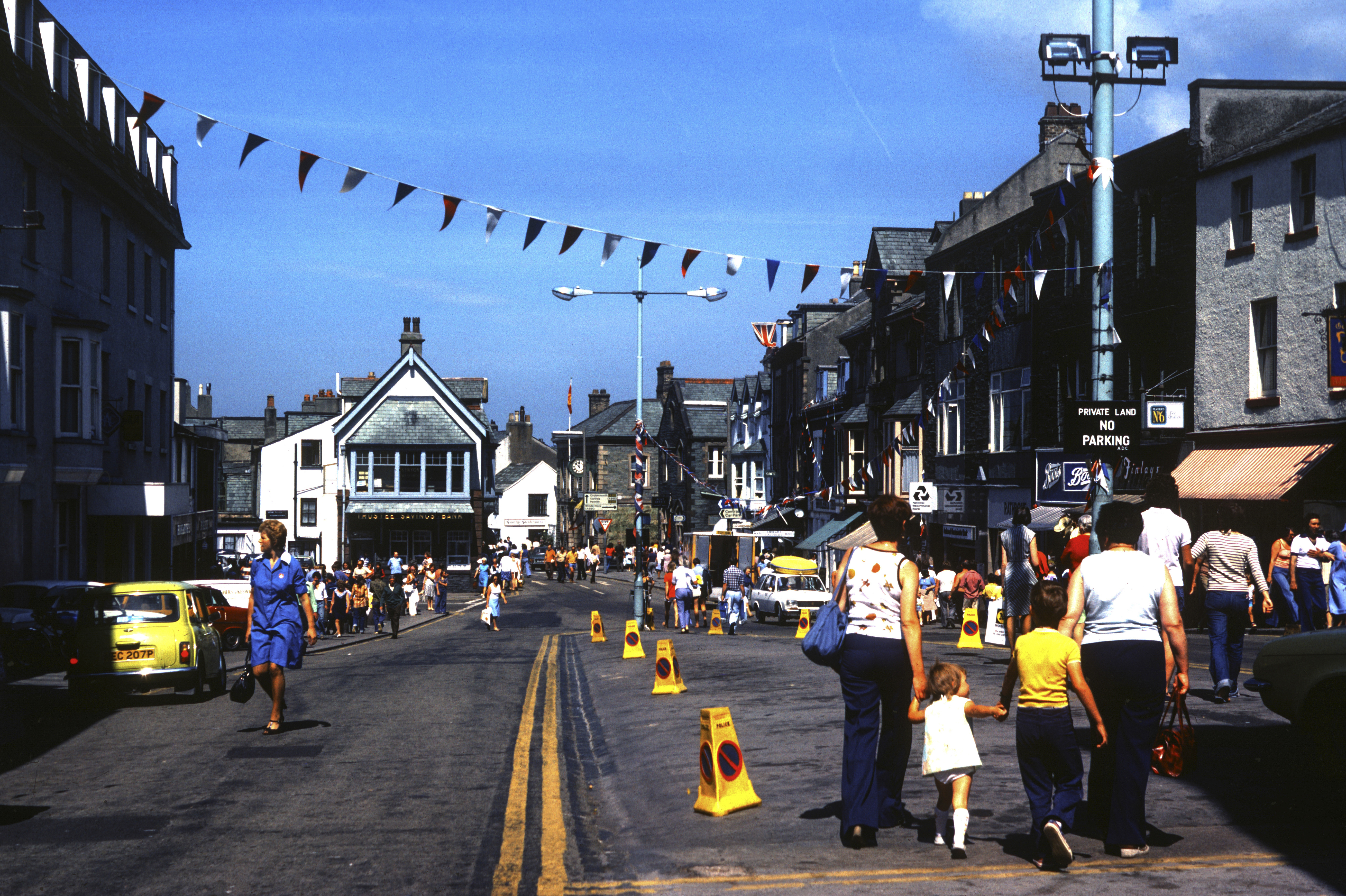
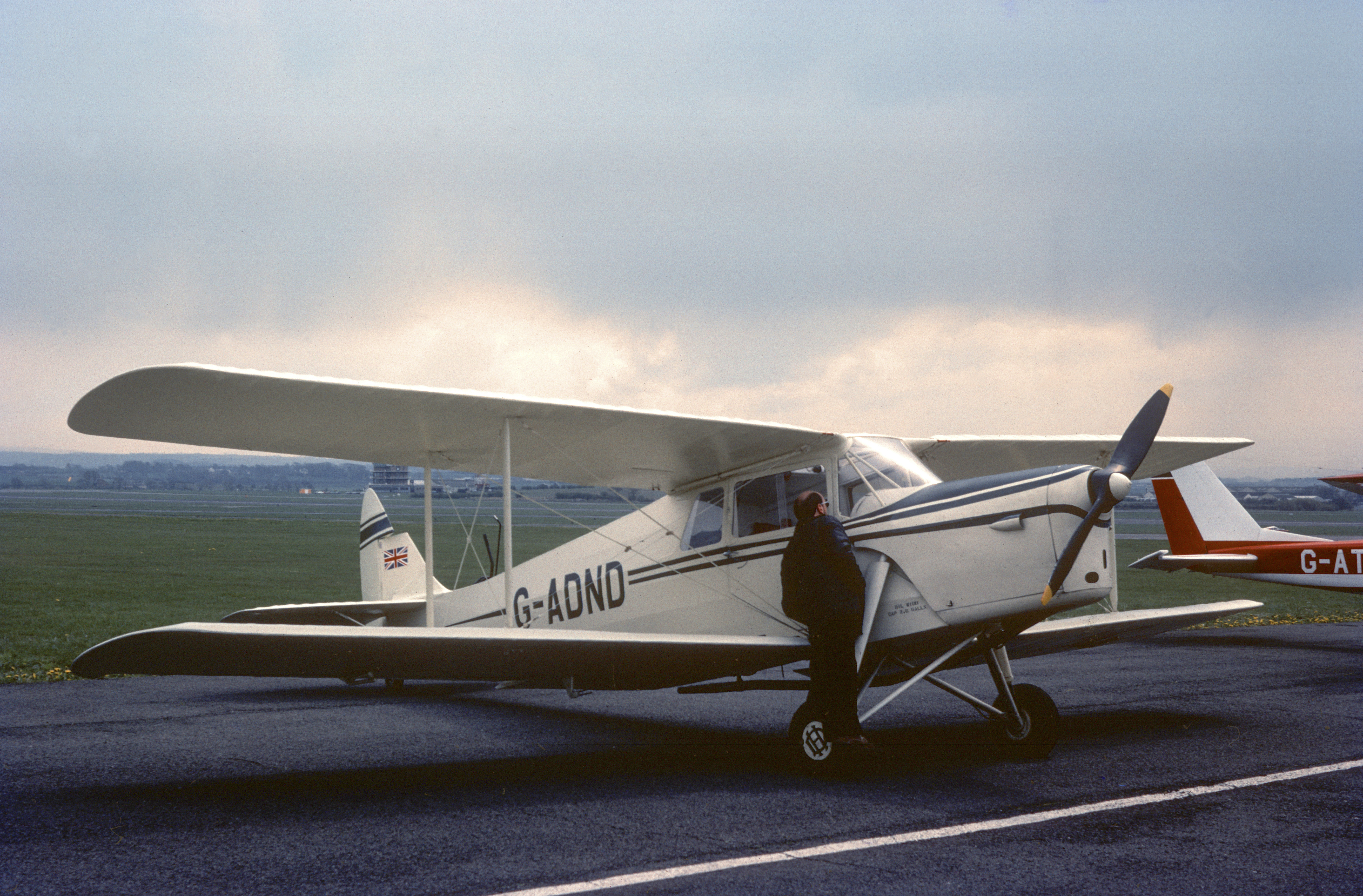
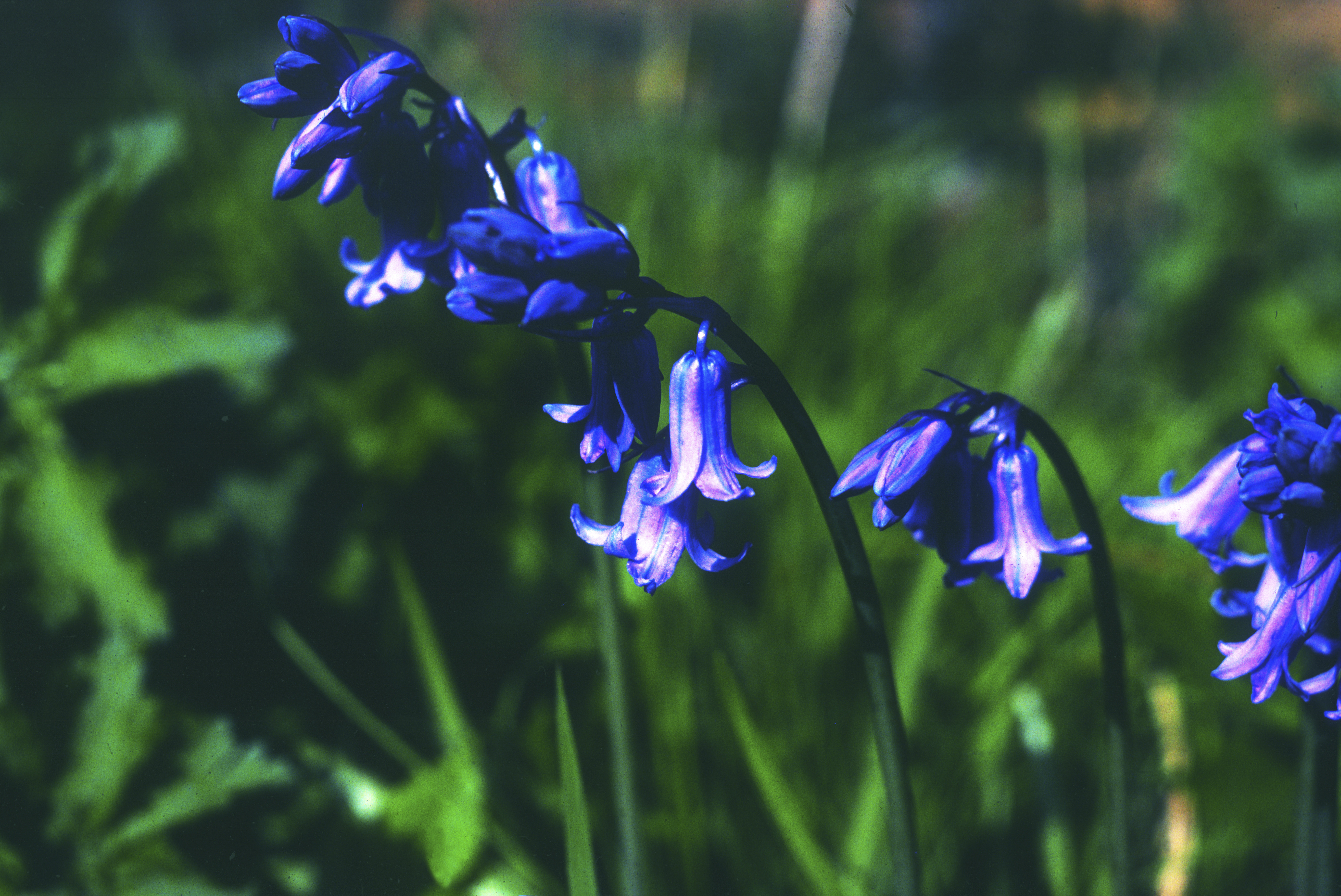
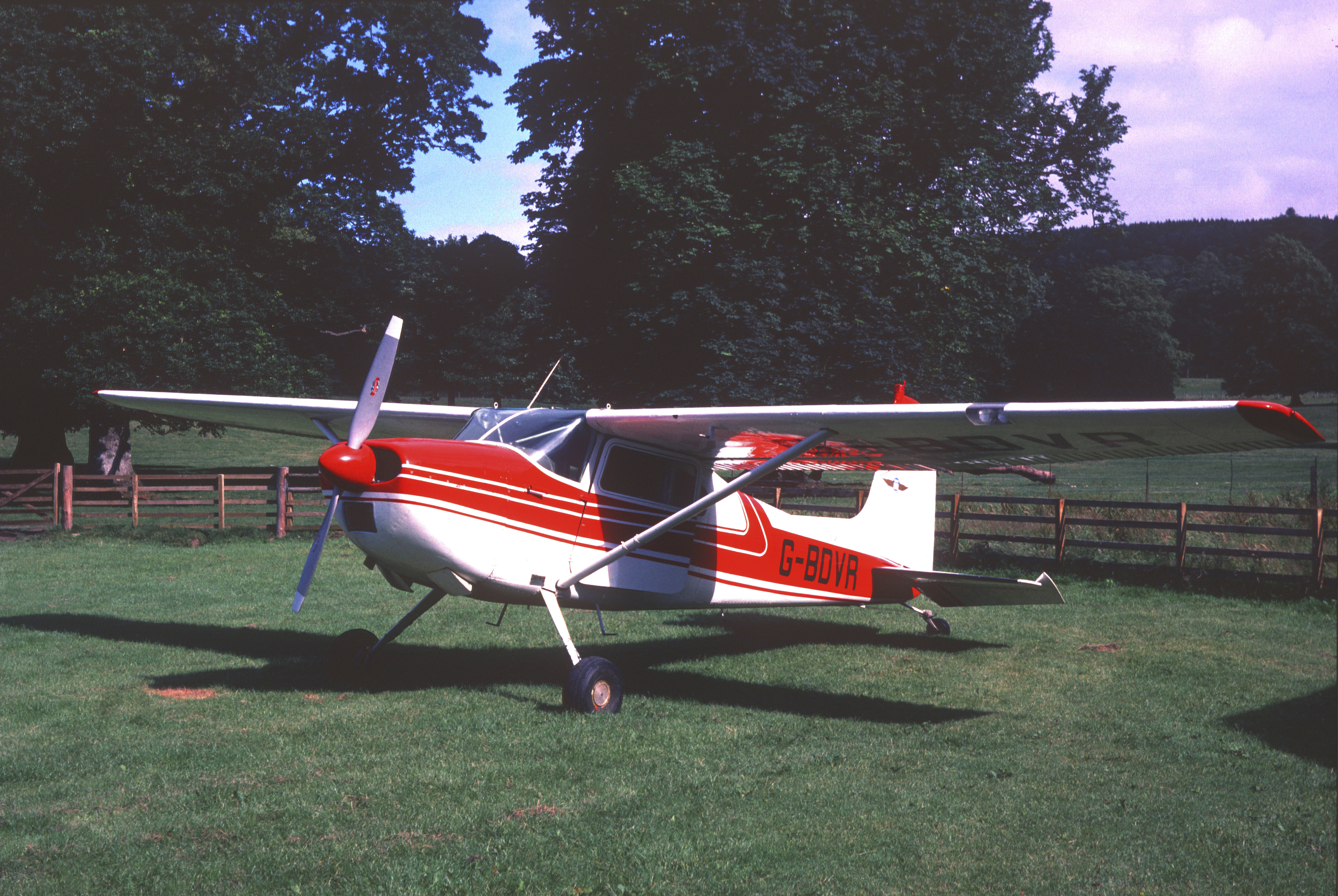
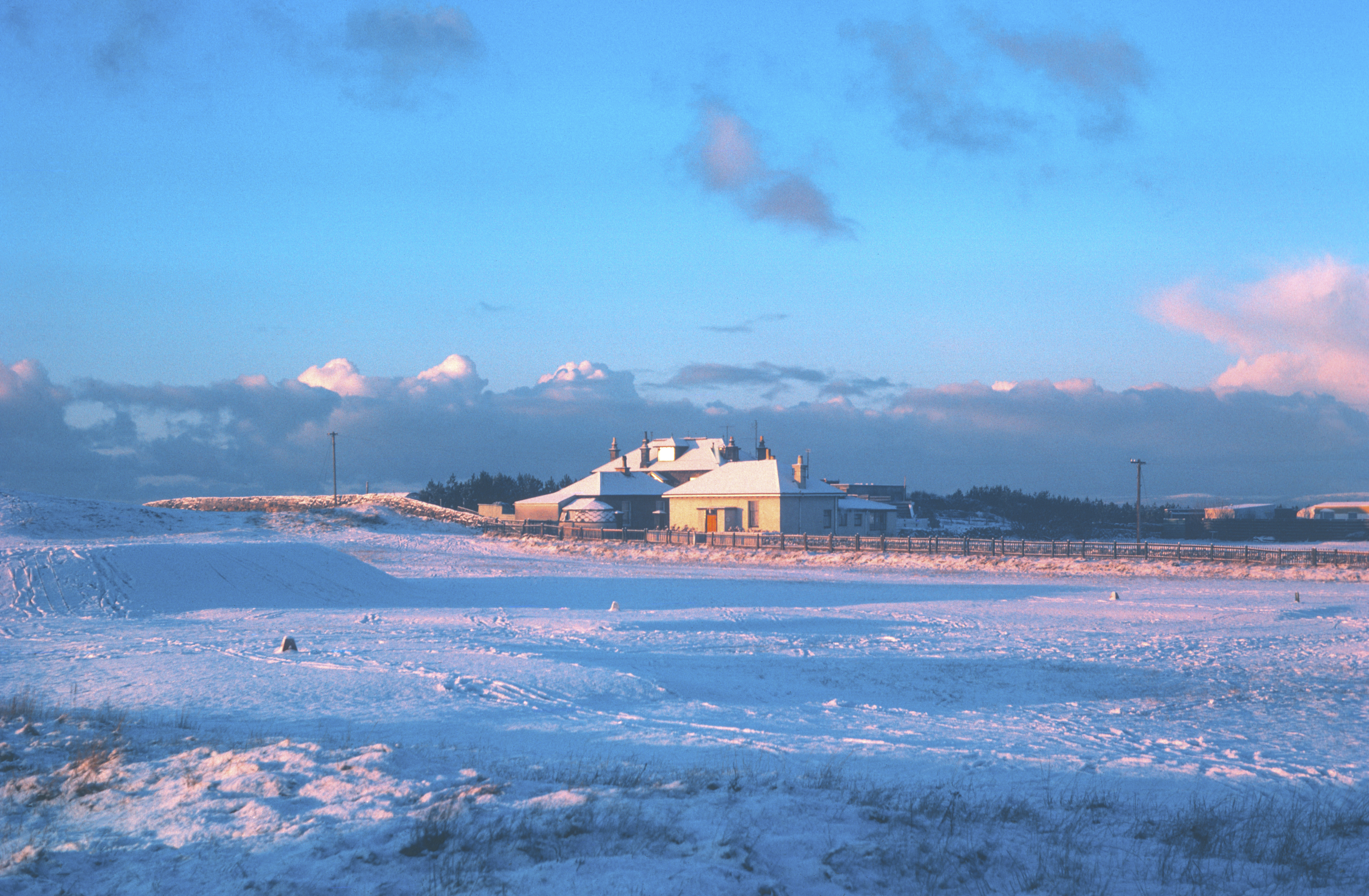
Fujica ST605: Verdict
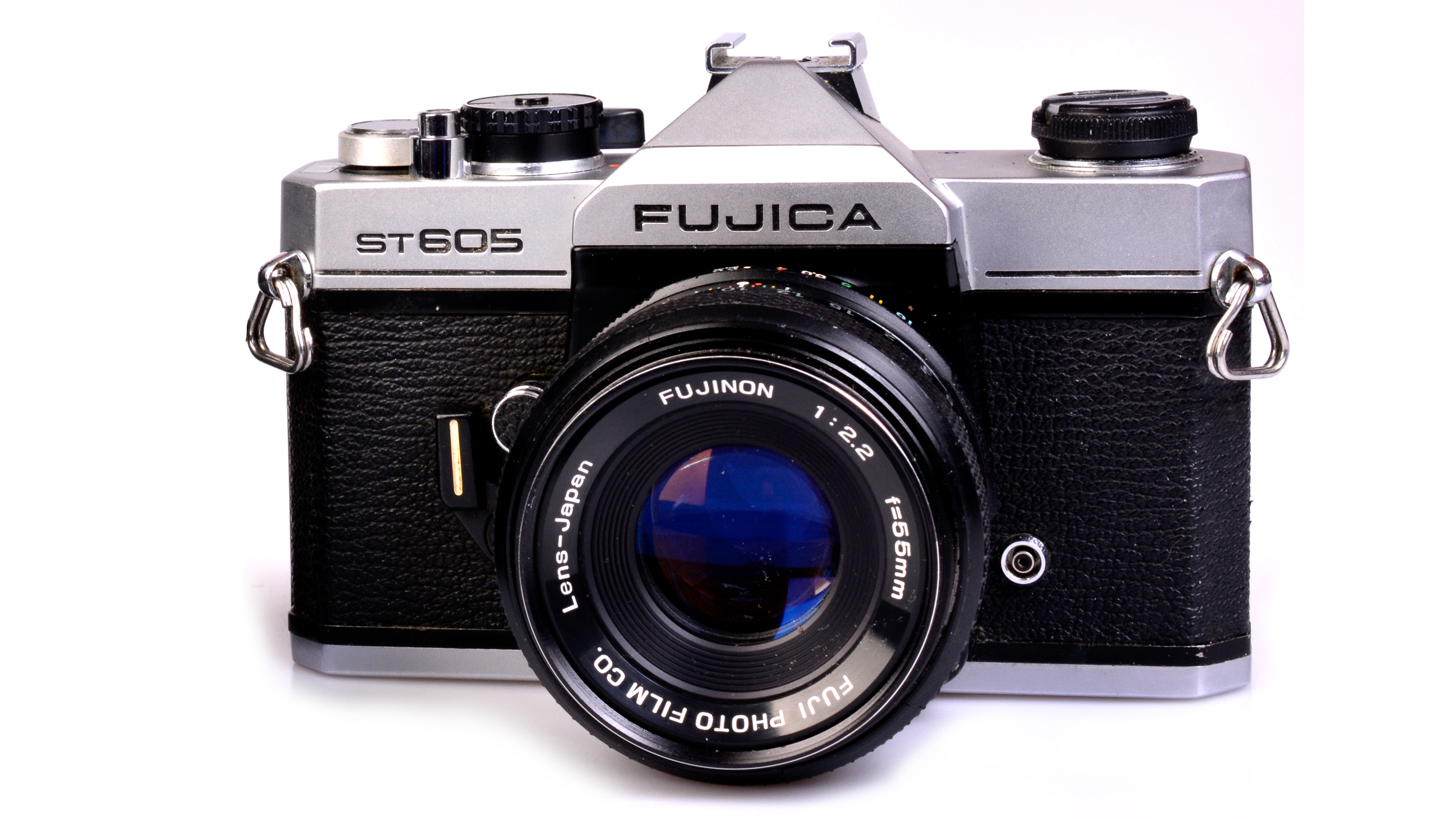
The ST series Fujicas still don’t have much cachet as collectibles compared to the rival mechanical contemporaries from the likes of Nikon, Olympus, and Minolta. However, the back-to-basics ST605 is now being ‘discovered’ as an interesting alternative to more popular cameras such as the Pentax K1000 and the Minolta SR-T models. Being less common is becoming an attraction. The screw mount means it can be fitted with a whole host of period lenses, but it’s worth tracking down the Fujinon EBC models, because they remain superb performers optically.
Prices are still comparatively low, but don’t expect garage-sale giveaways any more as classic 35mm SLRs of any flavor are in increasing demand and the ST605’s simplicity and reliability are big plusses for anybody who wants to actually use it. In fact, simplicity is this camera’s strong point on a number of levels, not the least being that you have to be intimately involved in the picture-taking process because it’s not going to do anything by itself. But get everything right in-camera and the Fujica ST605 can really reward you with great results – plus you’ll have a lot of fun in the process.
Read more:
• Best film cameras
• Best film
• Best darkroom equipment
• Best film scanners
• Best Fujifilm cameras
• Best Lomography cameras

Paul has been writing about cameras, photography and photographers for 40 years. He joined Australian Camera as an editorial assistant in 1982, subsequently becoming the magazine’s technical editor, and has been editor since 1998. He is also the editor of sister publication ProPhoto, a position he has held since 1989. In 2011, Paul was made an Honorary Fellow of the Institute Of Australian Photography (AIPP) in recognition of his long-term contribution to the Australian photo industry. Outside of his magazine work, he is the editor of the Contemporary Photographers: Australia series of monographs which document the lives of Australia’s most important photographers.
